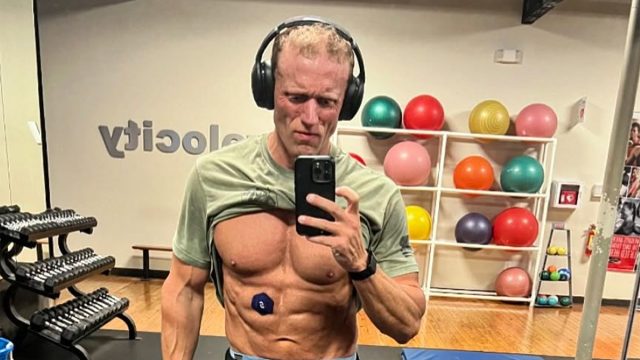Coach Got "Leanest Ever" at 40 by Making These 4 Changes

Are you trying to lean out? It might be time to make some changes to your routine. Keith Ozment is a fitness and weight loss coach specializing in helping people over 30 "repair metabolism, build muscle & burn fat!" he writes in his Instagram bio. In a new post, he reveals that he had to make some tweaks to his routine to shave off the pounds. "These 4 changes got me the leanest ever at 40," he says in the post.
After He Turned 40 He Had to Make Some Changes
"I've been working out consistently for over 20 years. I would always get strong and put on size but struggled to get super lean. I wanted to bring in my 40th birthday by reaching the goal of being leaner than I've ever been. I made these 4 Changes," he writes.
Patience:
"In the past, I'd start my summer cut in March, rush the process, and burn out before summer even arrived. This year, I started in January and ditched the deadlines. Instead, I focused on making sustainable lifestyle changes. By not rushing, I achieved better results without feeling drained," he said.
Daily Steps
"Walking is underrated!" he says. In January, I struggled to hit 8,000-10,000 steps. Now, I average 12,000-14,000 daily by getting creative." He takes 10-minute walks throughout the day and a 30-minute walk after dinner. "I even recommend a walking pad if outdoor walks aren't realistic," he says. "BONUS: My clients who prioritize daily steps see the best progress. Every 10 minutes = ~1,000 steps."
Zero Restriction
He also advises against restriction. "Instead of 'getting it all out of my system' with a cheat meal, I now enjoy foods I love every day," he says.
- Greek yogurt cereal bowls (w/ chocolate chips)
- Weekends = burgers, fries, or protein pancakes at @ihop
"This approach feels sustainable and keeps cravings in check. But I stay mindful of total calories and always hit my protein + fiber goals," he says.
However Calories Matter
"It's not all about calories, but let's be honest—it kinda is when it comes to fat loss," he continues. "Once I got real with myself about tracking everything (yes, even those sneaky bites while cooking), the fat loss results spoke for themselves. It's about creating balance with total calories and consuming nutrient dense foods. 80/20 rule! Gotta hit that protein goal also! Every day!"
Sleep & Recovery
Sleep and recovery is a "game-changer!" he says. "Consistent sleep/wake times = better rest. Blue light blocker glasses before bed. Active rest days (1-hour walks instead of weightlifting)," he says.
Also, Start Your Day with 40 Grams of Protein
In another post, he reveals his 40-30-20 method. First, the 40. "Start your day with 40g of protein. A breakfast smoothie with protein powder, berries, and almond milk or overnight oats with Greek yogurt and protein powder are great options," he writes. According to clinical trials, consuming more protein than the recommended dietary allowance not only reduces body weight (BW) but also enhances body composition by decreasing fat mass while preserving fat-free mass (FFM) in both low-calorie and standard-calorie diets.
Walk for 30 Minutes
Next up, the 30. "Walk for 30 minutes daily. Split it into two 15-minute sessions if needed. Walking boosts metabolism, reduces stress, and aids fat loss," he says. A 2018 study published in the journal Obesity found a link between walking 10,000 steps a day and weight loss and weight management. Other studies published by the Journal of American Medical Association (JAMA) in JAMA Neurology and in JAMA Internal Medicine also linked walking 10,000 steps a day to less dementia and less cardiovascular disease overall, with less heart disease, less heart failure and fewer strokes.
Lift Weights for 20 Minutes
And finally, the 20. "Dedicate 20 minutes to weightlifting 3-4 days a week," he adds. According to the Mayo Clinic, strength and weight training help reduce body fat, preserve and increase lean muscle mass, and burn calories more efficiently. Strength training may also help you develop strong bones, manage your weight, enhance your quality of life, manage chronic conditions, and sharpen your thinking skills. And if you enjoyed this article, don't miss 12-3-30 Walking Method: 20 Proven Tips to Lose Weight Faster.




